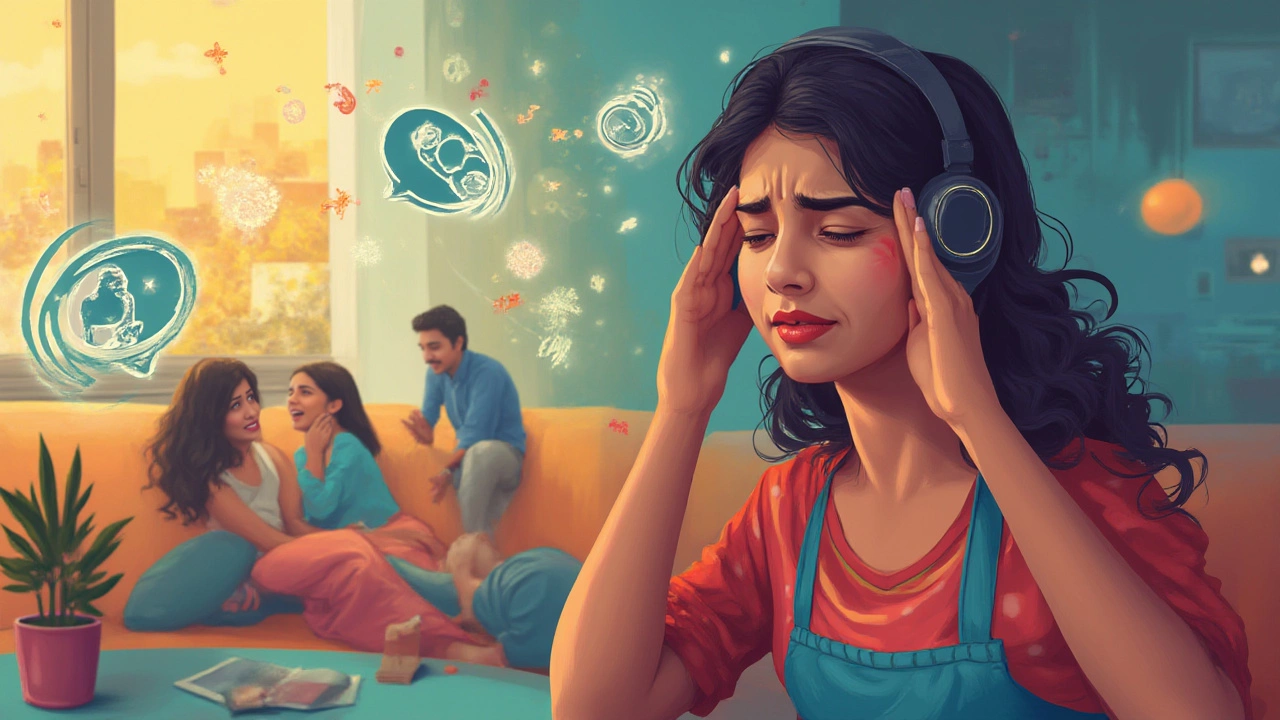
The first time you slip on noise cancelling headphones, it’s like discovering a secret escape door from the chaos around you. Suddenly, airplane engines fade, office chatter vanishes, and the world seems a little less stressful. But here’s something most people ignore: for all their magic, these headphones aren’t perfect. There are drawbacks you won’t find in the glossy product descriptions or trendy tech reviews. And if you believe silence has no hidden costs, you might want to listen up—literally.
How Noise Cancelling Headphones Actually Work (And What That Means for Your Ears)
Let’s decode a little science before we jump into the pitfalls. Noise cancelling headphones don’t just block out sound with heavy padding. The secret sauce is something called Active Noise Cancelling (ANC). These headphones use built-in microphones to listen to the world around you, then create sound waves—kind of like invisible noise erasers—that cancel out incoming sounds. It’s clever, but it also means you’re letting a computer process every noise you hear.
Here’s a real kicker: your ears aren’t always happy about this. A 2023 study in the "Journal of the Acoustical Society of America" found that about 17% of frequent ANC headphone users report symptoms like ear pressure, dizziness, and feeling slightly off-balance after long sessions. Manufacturers call this the "eardrum suck" effect. Basically, your ears notice the disruption in normal air pressure with some ANC setups—especially when you use them for hours on end. If you’ve ever taken your headphones off and felt like your head suddenly got lighter, that’s what’s going on.
It gets trickier if you already deal with motion sickness or vertigo. ENT specialists (the doctors who look after your ears and balance) will tell you ANC can be a mild trigger for these conditions. It doesn’t hit everyone, but if you notice queasiness, headaches, or ringing in your ears, you’re not alone. The problem? Awareness is low. Most people chalk these symptoms up to tiredness, not realizing their quest for peace and quiet might be the real culprit.
Keep in mind, noise cancelling headphones aren’t equal across brands or models. Some over-ear designs apply more pressure, while in-ears (earbuds) can feel intrusive over time. If you like marathon listening sessions—say, a few hours of playlists or a whole movie series—you might experience mild hearing fatigue, similar to listening to static for too long.
Manufacturers know about these issues, but the marketing spin is real. Many headsets now include an "ambient" or "transparency" mode to let in outside noise when needed. Still, those modes often use audio processing that can sound weirdly artificial, throwing off your natural sense of space. Instead of making the world clearer, it can leave you feeling a bit detached, like the audio version of putting on someone else’s glasses.

Safety, Situational Awareness, and Social Disconnect
Imagine walking across a busy street while your headphones work overtime to erase honking horns and screeching tires. Feels great—until it doesn’t. Noise cancelling tech is fantastic for flights, trains, and offices, but when you plug in during daily life, you risk missing important cues. According to the U.S. National Safety Council, accidents involving pedestrians distracted by headphones are up 80% in the past decade. ANC doesn’t just mask music; it sweeps away real-world alarm bells.
That’s just the start. It’s easy to get so lost in your own bubble that you ignore what’s right in front of you. Surprising? Maybe not, but it’s often overlooked. Commuters, cyclists, and even parents pushing strollers have reported near-misses in traffic—all because ANC shut out more than just background noise. It’s almost like wearing blackout curtains on your ears. While it sounds comfy, there’s a reason emergency responders now warn against full-time ANC use in busy environments.
Let’s talk about social life. Studies conducted in 2022 by researchers at the University of Manchester found that people wearing ANC headphones during group work were 25% less likely to pick up on subtle social cues. Even nonverbal stuff, like someone trying to get your attention or the start of a conversation, gets lost. You might feel focused, but the people around you might see you as distant or even rude. It’s not intentional, but the effect is there—especially in open-plan offices or at home if you have roommates or kids.
Isolation isn’t always healthy. For some, disappearing into their music is exactly what they want, but over time, the habit can sneak up on mental health. The World Health Organization actually advises short, regular breaks from headphones—noise cancelling or not—to help your brain recalibrate and keep you feeling connected to real life. More folks are reporting feeling "unplugged" from the world after long ANC stints, especially if they’re already spending hours in front of screens.
If you use ANC at work, pay attention to how it affects teamwork. Several tech companies quietly updated their policies encouraging staff to keep one ear open or use "ambient aware" features in meetings. Apparently, too many people were missing impromptu brainstorms, key updates, or just friendly exchanges by sealing themselves off. It’s a funny problem—headphones were invented for privacy, but perfect privacy might cost you quick collaboration and serendipity in real life.

Battery Life, Audio Quality, and Tech Troubles: What They Don’t Tell You
This is the part buried in the fine print: noise cancelling eats battery. ANC needs power to analyze, invert, and process sound, so your fancy headphones are always running a small computer—sometimes two, if each earcup processes noise separately. As a result, battery drain is real. According to product benchmarks published by RTings.com in early 2025, modern ANC headphones average 20-35 hours per charge—with noise cancelling turned on. Once you switch off ANC, that number can double or even triple. If you’re stuck on a long-haul flight or forget your charging cable, this can leave you with a pricey pair of earmuffs.
What about audio quality? This one surprises a lot of people. Classic audiophiles (the people who obsess over pure sound) often point out that ANC can dull or color your music. You might lose some crispness or detail, especially in the treble and bass. Brands try to compensate with software tricks, but even the most expensive models, like the Sony WH-1000XM5 or the Bose QuietComfort Ultra, trade a bit of sonic "sparkle" for that signature hush. If you listen to acoustic tracks or genres loaded with detail—classical, jazz, or live recordings—you might notice a difference.
Here’s something most buyers miss: ANC works best for steady, predictable sounds (think airplane engines, subway rattles, or HVAC hum). Quick, unpredictable noises—a dog barking, people shouting, or the whirr of a skateboard—don’t always get fully filtered. Instead, those sounds can slip through or get weirdly distorted. Sometimes this makes the outside world sound robotic or echoey, which can be jarring if you’re walking down the street or sitting in a busy cafe.
Don’t forget about connectivity hiccups. Because ANC headphones use Bluetooth and digital processing, they’re more prone to occasional audio lag, glitches, or syncing issues with devices. That’s especially true if you’re juggling between phone calls, streaming video, or gaming. Some models try to prioritize voice clarity or video sync, but that means there’s a software layer that can go sideways—not something you’ll face with old-school wired headphones.
Let’s run through a quick comparison so it’s easier to spot where ANC stacks up against other options:
| Feature | ANC Headphones | Standard Headphones |
|---|---|---|
| Battery Life | 20-35 hrs (ANC on) | 50+ hrs (or unlimited wired) |
| Audio Quality | Sometimes compressed | Pure signal |
| Awareness | Reduced | Full ambient sound |
| Price (avg. 2025) | $200-450 | $50-250 |
| Best Use Case | Travel, noisy offices | Home, active listening |
So what’s the trick to using ANC headphones without running into these headaches? For starters, try balancing silence with regular breaks. Don’t wear them longer than an hour at a stretch without letting your ears relax and the world filter back in. Look for models that let you fine-tune ANC strength or quickly switch to ambient mode without fiddling through menus. If your model supports app-based customization, set up profiles for different situations—one for work, one for streets, one for travel. That way, you stay safe and sound—literally.
And yes, pay attention to how your body reacts. If you notice headaches, nausea, or a weird feeling of distance after a long session, take the headphones off and see if things improve. It can take a little practice, but finding your own balance makes all the difference. Noise cancelling isn’t bad technology; it’s just not perfect. Knowing the trade-offs helps you get the most peace and quiet—without missing what matters on the outside.